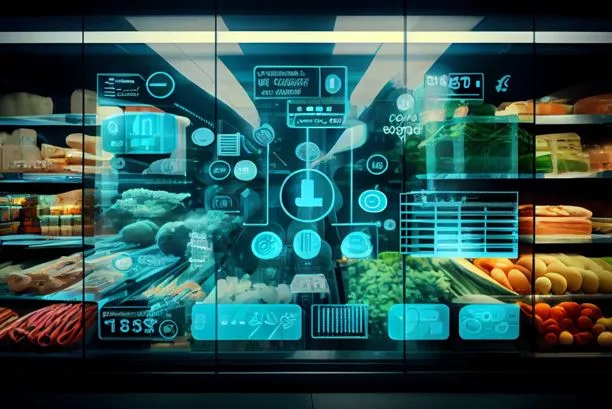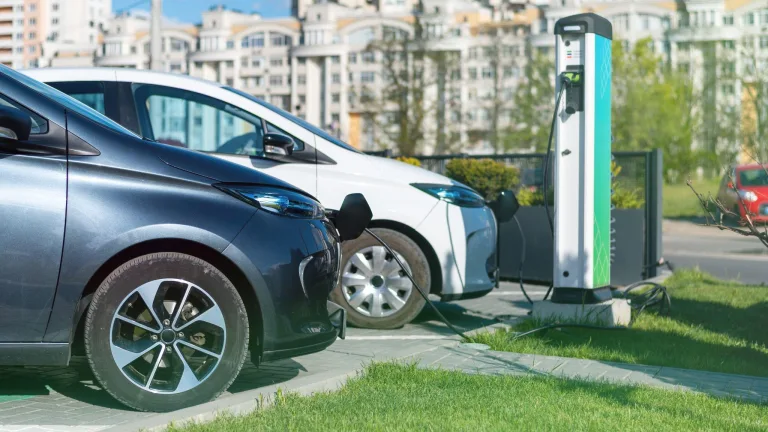The Role of IoT in Enabling Circular Economy Models in the CPG Industry
While neither circular economy nor IoT is new to the industrial world, the way they are simplifying sustainable, tech-enabled growth trajectories for CPG companies is remarkable. The most noteworthy fact is that while AI, ML, and IoT are driving innovation on several fronts, they are at the forefront of carving a circular economy in this industry.
In this blog, we have assessed recent industry developments and early research to highlight how the Internet of Things (IoT) is accelerating the adoption of the circular economy in the consumer packaged goods (CPG) industry.
Assessing the Growing Relevance of Circular Economy in CPG Manufacturing
The circular economy shifts away from the conventional linear “take-make-dispose” framework. The new approach emphasizes reuse, recycling, remanufacturing, and ethical product designing and packaging. Since the CPG sector is characterized by high product turnover and significant packaging waste, adopting sustainability is both imperative and a business opportunity. IoT technologies have emerged as enablers of this shift, offering a technological foundation for monitoring, optimizing, and tracing materials and product lifecycles.
How IoT is Strategically Embedding Circularization in the Future of CPG?
End-to-End Supply Chain Visibility
Technological innovations, such as digital twins, RFID tags, and IoT-powered sensors, are providing CPG players with exceptional end-to-end visibility throughout their value chains. As they capture real-time data on product condition, usage, and location, they help companies optimize inventory management, reduce waste, and address shrinkage. For instance, Unilever partnered with IoT providers to track its reusable packaging assets in real-time, leading to a substantial reduction in packaging losses across all pilot markets.
Packaging and Data-Driven Product Innovation
IoT-backed feedback loops are upgrading circular packaging and product designs. Intelligent packaging solutions, such as connected QR codes and printed electronics, are enabling organizations to collect granular-level data on consumer usage patterns, material recovery rates, and shelf life. This data-driven approach enables CPG leaders to strategize their product designs and packaging for improved circularity while complying with evolving regulatory standards. The list of early adopters includes names like Nestle, which recently piloted IoT-enabled product packaging that relays recycling instructions directly to end-users. It has improved the recycling rates by significant proportions.
Quick Asset Recovery and Reverse Logistics
Closed-loop logistics are critical to circular economy models. The evolving IoT platforms in this industry are optimizing the collection, classification, and redistribution of consumer goods and packaging post-use. More and more CPG companies are now streamlining their collection routes, reducing logistics costs, and increasing the recovery rate of valuable materials by leveraging predictive analytics and geo-location data. For instance, Procter & Gamble recently launched an IoT-enabled refillable packaging pilot project that demonstrated a 30% improvement in asset recovery rates, reducing single-use packaging waste and improving circularity metrics.
Predictive Maintenance and Lifecycle Management
IoT applications are facilitating proactive lifecycle management, especially in the context of durable and reusable assets. Through real-time monitoring of asset conditions, companies can predict maintenance requirements, thereby extending product lifespan and reducing the overall cost of ownership. Coca-Cola has established the best use case of this. The beverage giant deployed IoT sensors in reusable dispensers and crates, enabling condition-based maintenance and reducing asset downtime by approximately 15%.
Improved Consumer Traceability and Engagement
Lastly, IoT technologies are aiding transparency to earn consumer trust and loyalty by delivering transparency. The rising adoption of blockchain-enabled IoT solutions and digital product passports enables organizations to maintain long-term records of material composition, product provenance, and recycling strategies. Transparency is paving the way for compliance with evolving regulatory frameworks while allowing for brand differentiation in an overly competitive market.
Industry Trends Driving Circularization and Emerging Use Cases
Integration of AI and Edge Computing
Teaming AI, edge analytics, and IoT are paving the way for real-time decision-making at the source, reducing latency and unveiling new efficiencies for circular operations.
Digital Product Passports
The EU has recently proposed the Ecodesign for Sustainable Products Regulation (ESPR), which mandates digital product passports for the complete range of CPG entities from 2027 onwards. IoT is helping early movers attain a strong competitive edge along with regulatory compliance.
Smart Packaging for Waste Reduction and Food Safety
It’s easy to embed IoT-based freshness sensors in perishable goods packaging for real-time monitoring, preventing spoilage, and extending the product’s shelf life. The practice has contributed to reducing food waste in pilot deployments across Europe and North America.
How Can CPG Leaders Leverage This Opportunity?
- Interoperability and Scalability: Investing in interoperable IoT platforms will enable scaling product lines across different geographies. Additionally, standardization will be crucial in preventing data silos and ensuring seamless integration with recyclers and partners.
- Data Security and Governance: The establishment of robust data management frameworks will help ensure compliance with evolving regulatory models and secure sensitive operational and consumer data.
- Change Management: Companies also need to equip their teams with new skills and broader mindsets for leveraging IoT data to drive continuous improvement.
Strategic Enablers for Circular Transformation
With regulations such as the EU’s Ecodesign for Sustainable Products Regulation (ESPR) on the horizon, CPG companies are accelerating their circular transformation efforts. The integration of IoT enables smarter logistics, packaging recovery, and lifecycle monitoring, but aligning these efforts with strategic goals often requires external expertise. As a result, demand for sustainability consulting services is rising, especially among firms looking to future-proof operations and differentiate in a competitive market.
Bottomline
As leading CPG consulting experts observe, the intersection of circular economy principles and IoT standards presents a once-in-a-generation opportunity for transformation. CPG companies have a unique chance to build future-ready, disruption-resilient business models by strategically integrating IoT across circular value chains.
Investments in these solutions are proving essential to driving operational efficiencies, streamlining supply chains, and meeting growing stakeholder expectations for sustainable products. With increasing regulatory and market pressures, the companies that act early to embed IoT-enabled circularity will be best positioned to lead the next era of sustainable growth in the industry.





